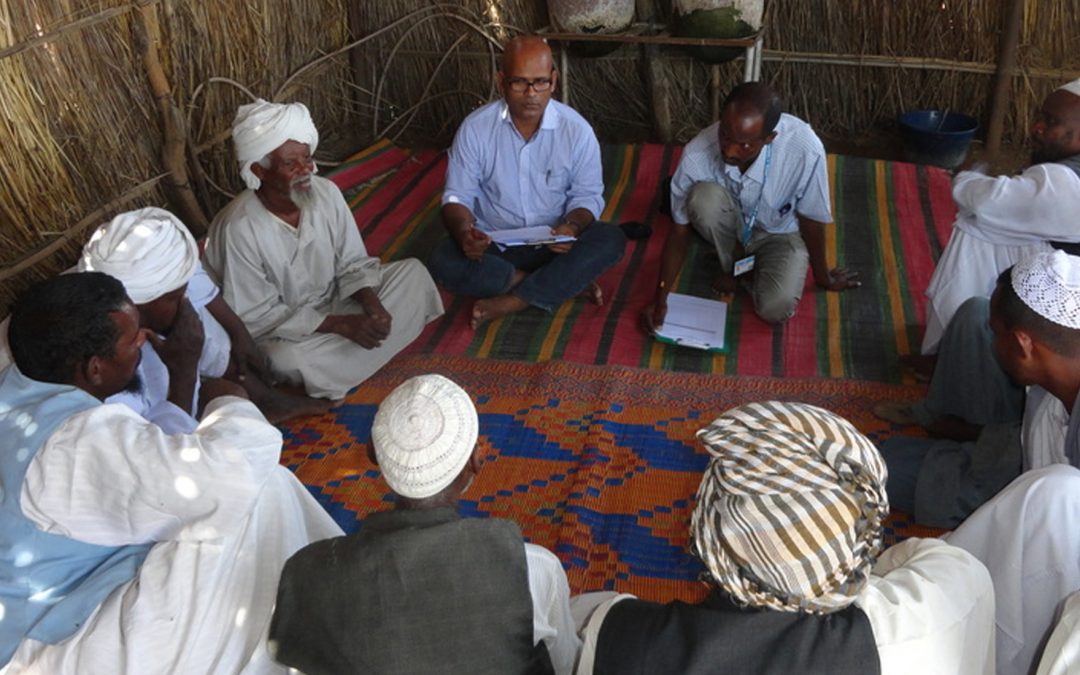At present, I am in the field, and leading the rapid livelihoods impact assessment in the refugee camps in Eastern Sudan. In the meantime, the assessment team has already completed data collection in 3 camps out of the 6 sampled camps. As the team leader, I had opportunities to participate in a number of focus group discussions and key-informant interviews with different livelihoods groups and the community leaders in the camps. The FGDs and informal discussions with households from different wealth strata were found to be an opportunity for me to understand the dynamics of refugee households’ livelihoods as well as the changes in livelihoods of different wealth groups. Farming and livestock play dominant role in shaping the livelihoods of majority of refugee households in Eastern Sudan, however, unfavorable agro-ecological climate perpetuates seasonal livelihoods crises and risks to refugee households across the wealth groups. From the FGDs with different livelihoods groups, it emerged that the coping strategies for any particular livelihoods crisis even varied from households to households within the same wealth stratum. Some households reported to have adopted positive coping mechanisms, for instance, off-farm activities outside the camps, temporary migration to other places to protect their productive assets, while some households informed to have adopted negative coping strategies such as selling assets or borrowing cash or in-kind, begging, child labor to manage the households’ basic needs during the crises period.
On my way to Fau5, a farthest camp in Eastern Sudan from the UNHCR Sub-Office, Kassala, it came to my mind that decision making-power of households is different from one another so are their livelihoods strategies and coping mechanisms. We mainly focus on the delivery of services to refugees through our implementing partners but do not explore much the sharing and learning opportunities for refugees in the camps to find viable solutions to their livelihoods crises. As a result, many households continue to suffer from cyclical crises that hinder them moving out of the vicious cycle of poverty. Risks, crises and vulnerabilities are part and parcel of the rural livelihoods, thus sharing of suitable livelihoods mechanism and coping strategies may have significant bearing on the livelihoods of disadvantaged households. Sharing of knowledge and ideas with each other will empower refugees to identify viable solutions to seasonal livelihoods crises, thereby, promoting their self-reliance.
With this view, I would like to initiate a series of discussions with a mixed livelihoods group of 15-20 people in a selected camp to explore a livelihoods risks and crises solution group. This group will be a combination of people from different livelihoods occupations who have proven experience in solving livelihoods crises and risks successfully in their lives. Furthermore, the group will be working as the ‘change agent’ of the community, and will share their experience in identifying viable coping strategies /solutions to livelihoods crises related to farming, livestock production, small enterprises and any other livelihoods activities on a regular basis. The selected 15-20 innovative refugees will be trained on the sustainable livelihoods framework to improve their conceptual and analytical ability about the holistic aspect of the household livelihoods. Through this organic process of solving crises and risks, the refugee community will be able to develop strong livelihoods resilience to any shocks. The sharing session will improve refugees’ decision making power to identify context specific solutions to their livelihoods crises. Moreover, it will develop a strong horizontal relationship among refugees that will expedite the on-going self-reliance efforts for refugees in Eastern Sudan. The indirect outcome of the livelihoods crises solution platform/mechanism will reduce refugees’ dependency attitude towards relief and assistance during any seasonal crises. The message of the livelihoods crises and risks solution group will likely to be as follows: SOLVE CRISES; BECOME SELF-RELIANT.
After completion of the livelihoods assessment, I will explore the suitability of the idea in a selected camp. During the ideation process, the selected refugees will identify livelihoods crises and risks; crises months, prioritize the crises, and develop sharing session plan. Based on the feasibility, a project will be developed in cooperation with refugees and be piloted in a camp in cooperation with the implementing partner and the members of the UNHCR livelihoods section in Kassala, Eastern Sudan. Based on the result of the pilot, the project will be rolled out in other camps.
Constructive criticisms and suggestions are welcomed to improve the initial idea further.
Khandaker Aminul Islam
Associate Livelihoods Officer
UNHCR Sub-Office for Eastern Sudan, Kassala
If you’d like to repost this article on your website, please see our reposting policy.

